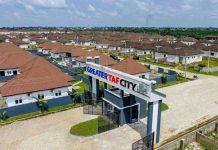JLL Survey results from Tétris glimpse into the future of the workplace
The Covid-19 pandemic and resulting lockdowns worldwide have challenged conventional ideas on how we work and what a workplace should look like. Will the traditional 9-5 workday and five-day work week at the office come to an end as new, more flexible work patterns emerge? International research conducted by JLL and released by Tétris Design & Build (owned by JLL, a Fortune 500 company) titled Worker Preferences Barometer reveals that this may be the case, although offices will still play a leading role in the way we do business.
The study, which surveyed 3,300 office workers across ten countries, showed that 79 percent of the workforce aspire to be back in the office at least once a week, up from 74 percent last October, highlighting the declining appetite to work solely from home as homeworking fatigue sets in. Thirty-seven percent feel more productive at home, down from 48 percent last April. However, 63 percent of workers do not want to be office-bound, showing preference for a hybrid style of working from both home and the office or third-party locations such as coworking lounges and coffee shops.
While the disruption in workflow due to Covid-19 has had a negative impact on business over past year, it has also paved the way for innovative working solutions and new ways of achieving a good work-life balance – a top priority for Millennials and Gen Z. Emma Luyt, co-CEO of JLL sub-Sahara Africa and MD of Tétris Design & Build, is excited by the opportunity for strategic workplace design and bespoke office fit-outs as a means to refresh and re-engage with returning staff and believes the innovation it demands will bring enormous future value to the office sector.
Key insights from the research:
- Work-life balance is the number one workforce priority, ahead of salary. Over 80 percent of the workforce want to be able to choose their working hours in the future.
- Homeworking fatigue is growing. Over sixty percent of the workforce want to keep the possibility of alternating between different places of work in the future with two days a week outside the office being the new optimum.
- A homeworking learning curve has developed. Expectations regarding homeworking frequency in the future are directly linked to the intensity of the habit today as 58 percent of employees working one to two days a week from home currently want to do so in the future.
- Productivity at home is declining, but it’s not translating into stronger satisfaction with the office. Just 47 percent say they are satisfied with their office today.
- Quality of life is not fulfilling without a rich social life; it is not only about time management. Sixty-one percent of the workforce are craving ‘real’ human interactions with colleagues.
- Long-lasting homeworking is hiding a heavy social and mental toll. More than ever before, companies are being held responsible for the physical, mental and social health of their employees. Forty-eight percent of the workforce feel overwhelmed by a huge mental load.
- Sociodemographic and household profiles are having a strong impact of the work from home experience. Fifty-seven percent of Gen Z workers feel under pressure; half of them are worried about their job.
- An outstanding office is the best way to have your people back. Sixty nine percent of people highly satisfied with their office environment strongly miss their office. The number is only five percent among those who are not fully satisfied with their usual work environment.
Luyt says that business leaders need to get back into the office to protect and grow their business culture and nurture younger teams who require office infrastructure and connection to perform, but a rethink of corporate workspaces is necessary if business owners want to get employees back and working productively. “Company owners are looking for workspace solutions that can foster inclusivity and co-working while providing quiet spaces for thinking and doing,” she says.
Undeniably, putting employees first is key to creating experiential workspaces that improve performance, retain current staff and are effective in attracting future talent. “Aesthetics will become more important in the future office. It is crucial that the post-pandemic office is attractive, comfortable and visually interesting.”
The office will become the primary place of work again, according to Luyt but only on condition that the experience meets the new demands of the workforce. “The months to come will see a ‘flight to quality’, with top employers acknowledging the new workforce expectations through an in-depth rethinking of their approach to work, the workforce and the workplace.”








